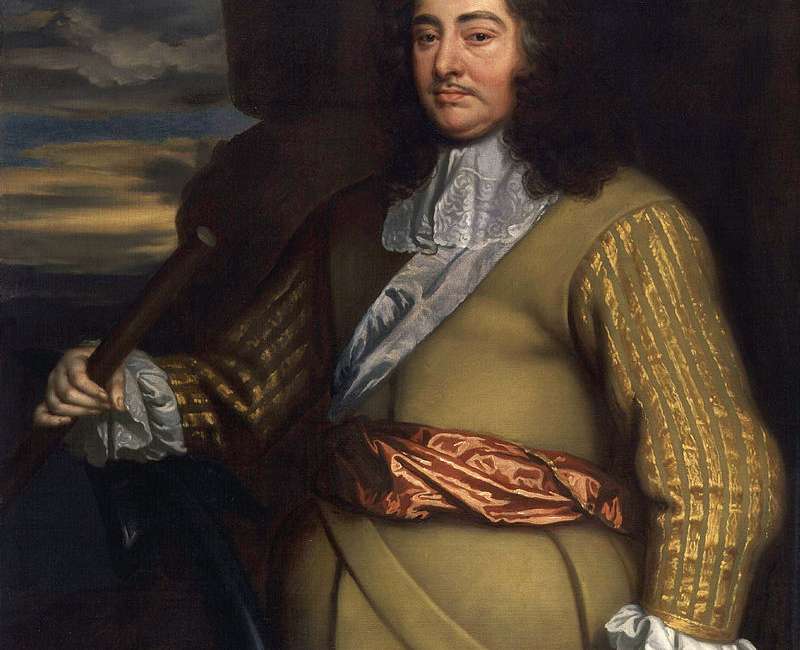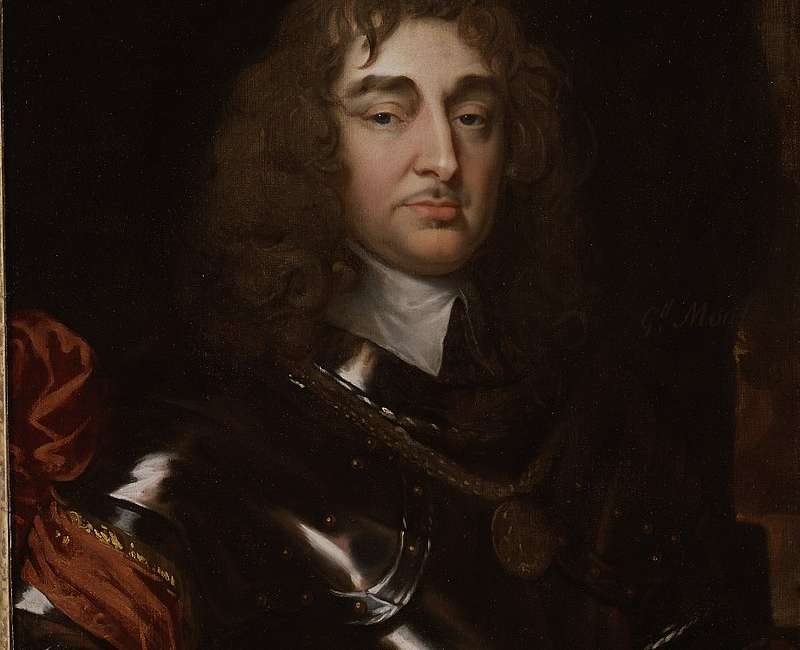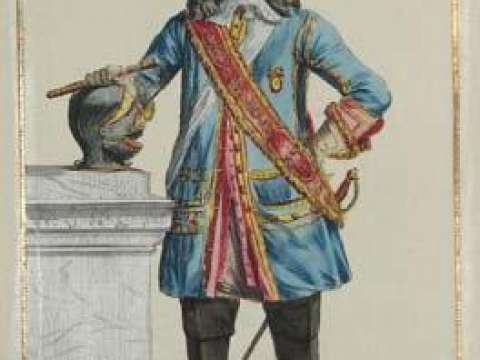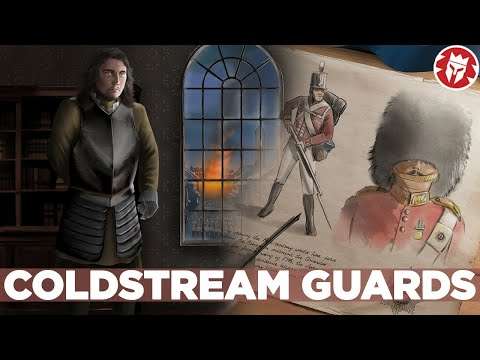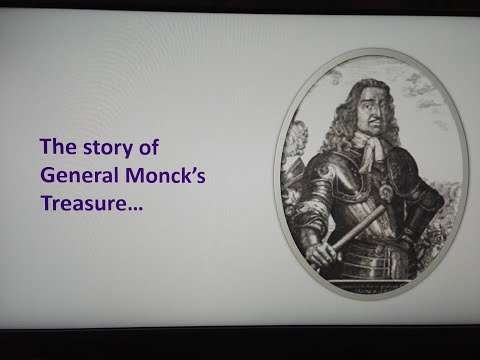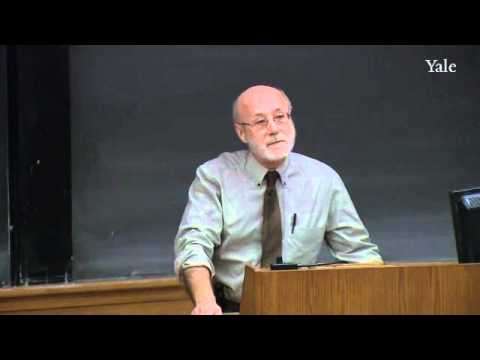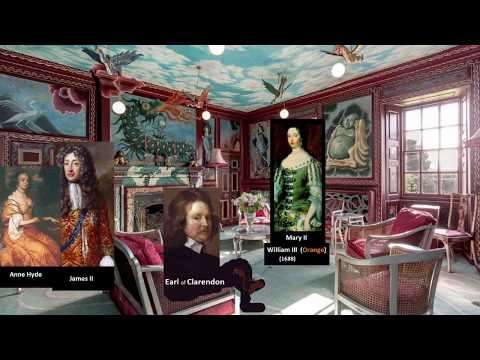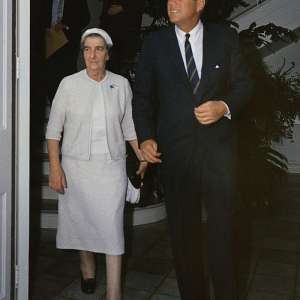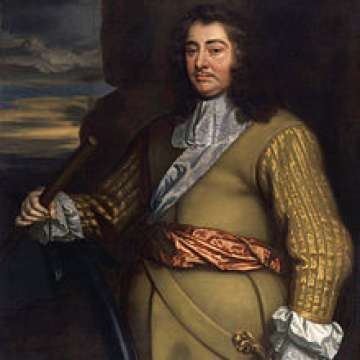

George Monck, 1st Duke of Albemarle (1608-1670)

What matters this or that reason? What we want is more of the trade which the Dutch now have.
George Monck, 1st Duke of Albemarle, was an English soldier and politician, and a key figure on both sides of the English Civil War, as well as the Restoration of the monarchy to King Charles II in 1660.
Origins
Monck was born on 6 December 1608 at the family estate of Potheridge in the parish of Merton, near Great Torrington, Devon, the second son of Sir Thomas Monck 1570–1627 one of the Members of Parliament for Camelford in 1626, a member of a landed gentry family of ancient origins but then-straitened financial circumstances. Sir Thomas's wife and George's mother was Elizabeth Smith, a daughter by his first marriage of Sir George Smith d. 1619 of Madworthy, near Exeter, Devon, a merchant who served as a Member for Exeter in 1604, was three times Mayor of Exeter and the City of Exeter's richest citizen, being lord of 25 surrounding manors. Elizabeth's sister Grace Smith was the wife of Sir Bevil Grenville 1596–1643, of Bideford in Devon and Stowe, Kilkhampton in Cornwall, the Royalist soldier killed in action during the Civil War in heroic circumstances at the Battle of Lansdowne in 1643. Sir Bevil's son and heir, and thus George Monck's first cousin, was John Grenville, 1st Earl of Bath 1628–1701, a fellow supporter of the Restoration, whose elevation to the peerage was largely due to Monck's influence.
Early life and career
Having assaulted the Under Sheriff of the county in revenge for a wrong done to his father, Monck was forced to go abroad. Becoming a soldier, he served as a volunteer in the 1626 expedition to Cadiz, and the next year fought well at the siege of the Île de Ré an abortive attempt to aid French Protestants in the City of La Rochelle.
In 1629 Monck went to the Netherlands, then a theatre of warfare, and there he gained a high reputation as a leader and as a disciplinarian. He fought bravely at the 1637 Siege of Breda, always first in the breach of his men. In 1638 he surrendered his commission in consequence of a quarrel with the civil authorities of Dordrecht and returned to England. He was appointed to the lieutenant-colonelcy of the Earl of Newport's regiment.
Service in the Royalist cause
During the operations on the Scottish border in the Bishops' Wars 1639–1640 he showed his skill and coolness in the dispositions by which he saved the English artillery at the Battle of Newburn 1640.
At the outbreak of the Irish rebellion 1641 Monck was appointed as colonel of Sidney's Regiment under the command of James Butler, 1st Duke of Ormonde. All the qualities for which he was noted through life – his talent for making himself indispensable, his imperturbable temper and his impenetrable secrecy – were fully displayed in this post. The governorship of Dublin stood vacant, and Lord Leicester recommended Monck.
Charles I overruled the appointment in favour of Lord Cavan, and Monck relinquished the appointment without ado. The Duke of Ormonde viewed him with suspicion as one of two officers who refused to take the oath to support the Royalist cause in England and sent him under guard to Bristol.
Monck justified himself to Charles I in person, and his astute criticisms of the conduct of the Irish war impressed the King, who gave him a command in the army brought over from Ireland during the Civil War. Taken prisoner by the Parliamentary Northern Association Army under Lord Fairfax at the Battle of Nantwich in January 1644, he spent the next two years in the Tower of London. During his imprisonment he wrote Observations on Military and Political Affairs.
Career under the Commonwealth and Protectorate
Monck's experience in Ireland led to his release. He was made major general in the army sent by Parliament against Irish rebels. Making a distinction like other soldiers of the time between fighting the Irish and taking arms against the king, he accepted the offer and swore loyalty to the Parliamentary cause. He made little headway against the Irish led by Owen Roe O'Neill and concluded an armistice called then a "convention" with the rebel leaders upon terms which he knew the Parliament would not ratify. The convention was a military expedient to deal with a military necessity. When in February 1649 Scotland proclaimed Charles, Prince of Wales, as Charles II, King of Scotland, the Protestant Ulster Scots settlers did the same and following Charles's lead took the Solemn League and Covenant. Most of Monck's army went over to the Royalist cause, placing themselves under the command of Hugh Montgomery, 1st Earl of Mount Alexander.

Although Parliament disavowed the terms of the truce, no blame was attached to Monck's recognition of military necessity. He next fought at Oliver Cromwell's side in Scotland at the 1650 Battle of Dunbar, a resounding Roundhead victory. Made commander-in-chief in Scotland by Cromwell, Monck completed the subjugation of the country. After his forces stormed the town of Dundee, he lost control of his men with the resulting murder and rape of the population. The streets of the town were reputed to run red with blood for days and Monck eventually was sickened by the barbarity when he saw the corpse of a suckling mother with her baby still feeding. In February 1652 Monck left Scotland to recover his broken health at Bath, and in November of the same year he became a General at Sea in the First Anglo-Dutch War.
On his return to shore Monck married Anne Radford née Clarges. In 1653 he was nominated one of the representatives for Devon in Barebone's Parliament. He returned to Scotland, methodically beating down a Royalist insurrection in the Highlands. At Cromwell's request, Monck remained in Scotland as governor.
In 1654, the timely discovery of a plot fomented by Robert Overton, his second in command, gave Monck an excuse for purging his army of all dissident religious elements, then called "enthusiasts", deemed "dangerous" to the Cromwell regime.
In 1655 Monck received a letter from the future Charles II, a copy of which he at once sent to the Lord Protector Oliver Cromwell, who is said to have written to Monck in 1657: "There be that tell me that there is a certain cunning fellow in Scotland called George Monck, who is said to lye in wait there to introduce Charles Stuart; I pray you, use your diligence to apprehend him, and send him up to me." Monck's personal relations with Cromwell were those of sincere friendship on both sides.
Restoration of the monarchy
Soldier though Monck was, he had played the difficult game of politics in a fluid and uncertain situation. That he was victor sine sanguine, i.e., "without blood", as the preamble of his patent of nobility stated, was generally applauded as the greatest service of all, especially after the Civil Wars.
Waiting in Edinburgh
During the confusion which followed Oliver Cromwell's death on 3 September 1658, Monck remained silent and watchful at Edinburgh, careful only to secure a hold on his troops. At first he contemplated armed support of Richard Cromwell, but on realising the young man's incapacity for government, he gave up this idea and renewed his waiting policy.

In July 1659 direct and tempting proposals were again made to him by the future Charles II. Monck's brother Nicholas, a clergyman, brought to him the substance of Charles's letter. He bade his brother go back to his books, and refused to entertain any proposal. But when George Booth, 1st Baron Delamer, rose in insurrection in Cheshire for Charles II, so tempting did the opportunity seem that he was on the point of joining forces with him and a manifesto was prepared. His habitual caution induced him to wait until the next post from England, and the next post brought news of Booth's defeat.
March on London
When Charles Fleetwood and General John Lambert declared against the Parliament, Monck not only refused to join them but on 20 October 1659 took measures to actively oppose them. Securing his hold on Scotland by a small but trusty corps of occupation, he crossed the border with the rest of his army.
Holding Lambert in play without fighting until his army began to melt away for want of pay, Monck received the commission of commander-in-chief of the Parliamentary forces on 24 November 1659. The navy, some of the English garrisons and the army in Ireland declared for the Rump Parliament against Fleetwood, Lambert and the other members of the Wallingford House party. Monck led his army south from Scotland towards London, crossing the River Tweed on 2 January 1660.
Monck's army was inferior in number, but in all other respects superior to Lambert's, and Monck slowly marched on to London, disbanding or taking over on his way the detachments of Lambert's army which he met, and entered the capital on 3 February 1660. He took up residence at St James Palace.
Parliamentary negotiation in London
In all this his ultimate purpose remained opaque. At one moment he secretly encouraged the demands of the Royalist City of London, at another he urged submission to the existing parliament, then again he refused to swear an oath abjuring the House of Stuart and further he hinted to the Rump of the Long Parliament the urgent necessity of a dissolution.
Monck allowed Presbyterian members, "secluded" in Pride's Purge of 1648, to re-enter Parliament on 21 February 1660 while at the same time breaking up, as a matter affecting discipline, the political factions that had formed in his own regiments. He was now master of the situation. The reconstituted Long Parliament dissolved itself on 16 March 1660 after preparing legislation for a new Convention Parliament to be summoned.
Monck was elected Member of Parliament for both Devon and Cambridge University in the Convention Parliament of 1660.
Monck himself, in communication with Charles II, accepted the latter's Declaration of Breda of 4 April 1660, which was largely based on Monck's recommendations. It offered reconciliation and forgiveness. Charles promised a general pardon for crimes committed during the English Civil War and the Interregnum for all those who recognised Charles as the lawful king except for those who had killed his father; the retention by the current owners of property purchased during the same period; religious toleration; and the payment of pay arrears to members of the army, and that the army would be recommissioned into service under the Crown.
Monck entirely concurred with the disbandment of the New Model Army, although the regiment of which he was Colonel, given the name Coldstream Guards after his death, survives un-amalgamated to this day.
On 1 May the newly convened Convention Parliament formally invited Charles, as King Charles II, to be the English king in what has become known as the Restoration.
Commemoration
Monck's 335-mile 539 km march from Coldstream to London was repeated by travel writer and former Coldstream Guards officer Harry Bucknall in 2015 who followed Monck's footsteps in aid of injured and homeless servicemen.
Charles II's gratitude
King Charles II rewarded Monck suitably for his services in restoring him to his throne. He was made Gentleman of the Bedchamber, Knight of the Garter, and Master of the Horse in the King's household. The King also raised him to the peerage in 1660 as Baron Monck of Potheridge in the County of Devon, Baron Beauchamp of Beauchamp in the County of Devon, Baron of Teyes in the County of Devon, Earl of Torrington in the County of Devon, and Duke of Albemarle.
He also received an annual pension of £7,000.
As a further token of Charles II's gratitude, in 1663 Albemarle was named one of eight Lords Proprietors given title to a huge tract of land in North America which became the Province of Carolina, the present-day American states of North and South Carolina. Albemarle Sound in North Carolina is named after him.
The preamble of Monck's peerage patent recited his female descent from the Beauchamp family, Earls of Warwick, which family had also held the titles Baron Beauchamp, Baron Teyes and anciently the Norman comté of Aumale, traditionally Latinized to "Albemarle". Although the title Earl of Warwick was unavailable to him, being then held by the Riche family the title Duke of Albemarle was available and granted to Monck.
In 1660 Monck obtained from the king the extraordinary warrant promising that should his issue fail in the male line his new title Duke of Albemarle be reverted to his first cousin and colleague in the success of the Restoration, John Granville, 1st Earl of Bath. Monck's son did indeed die childless in 1688, but no claim was made to the dukedom by the Granvilles of the new king, William III. And in 1697 the King conferred the title, as an earldom, on his favourite Arnold Joost van Keppel.
Charles II's promise to Monck was fulfilled in France in 1721 when the Old Pretender King James III bestowed a supposed Dukedom of Albemarle onto the 1st Earl of Bath's nephew, the Jacobite George Granville, 1st Baron Lansdowne, who had fled England in 1721.
End of career
In 1664 Monck had charge of the admiralty when James, Duke of York, commanded the fleet, and when in 1665 much of the populace deserted London on account of the Great Plague, Monck, with all the readiness of a man accustomed to obey without thinking of risk, remained in charge of the government of the city.
At the end of 1665, he was called upon to fight again, being given a joint commission with Prince Rupert against the Dutch in the Second Anglo-Dutch War. The whole burden of the preparations fell upon him. On 23 April 1666 the admirals joined the fleet, and on 1 June 1666 began the great Four Days' Battle, in which Monck showed not only all his old coolness and skill, but also a reckless daring which had seemed hitherto foreign to his character. As this recklessness had cost the English many ships, command of the fleet was taken from him and given to Rupert, whom he would accompany in the St. James's Day Battle, the last battle at sea in which he would participate. Later in the same year he maintained order in the city of London during the Great Fire of London.
His last service occurred in the Raid on the Medway of 1667, when the Dutch fleet sailed up the Thames, and Monck, though ill, hurried to Chatham to oppose their farther progress. From that time he lived generally privately although he officially served as First Lord of the Treasury.
Also at the end of his career, Monck was a signatory to "The Several Declarations of The Company of Royal Adventurers of England Trading into Africa." This document was published in 1667 by the Royal African Company, a corporation which attempted to monopolize the slave trade in England starting in the late 1660s. There is a possibility that someone signed on Monck's behalf; however, if that is not the case, then the signature is evidence that he both consciously supported and funded England's slave industry.
Death, burial and succession
He died of edema on 3 January 1670, "like a Roman general with all his officers about him". He is buried in Westminster Abbey. His titles were inherited by his only son, Christopher Monck, 2nd Duke of Albemarle 1653–1688, upon whose death they became extinct.
Monument in St Giles in the Wood
No monument of any sort exists to the Duke in the parish church of Merton, in which parish was situated his ancestral estate of Potheridge. The church was heavily restored in 1872–1875. The road sign on entering the village does proclaim: "Merton, birthplace of General George Monck". The remaining truncated wing built by him at Potheridge survives as a former farmhouse, now used as an adventure holiday centre. Some remnants of its grandeur survive inside, including a grand wooden staircase and above on the ceiling three ornate oval plasterwork wreaths framing paintings.
A heraldic stone escutcheon sculpted in relief showing his arms survives on the external wall of the parish church of St Giles in the Wood, North Devon, 3 miles north-east of Potheridge, above the private door to the north transept. The arms are as follows:Quarterly of 4: 1st: Gules, a chevron between three lion's heads erased argent Monck; 2nd: quarterly of 4: 1:Royal Arms of England Arms of King Edward IV; 2 & 3: Or a cross gules de Burgh; 4th: Barry or and azure, on a chief of the first two pallets between two base esquires of the second over all an inescutcheon argent Mortimer; over-all a baton sinister Arms of Arthur Plantagenet, 1st Viscount Lisle the maternal grandfather of the Duke's grandfather Anthony Monck 3rd: Barry of six argent and azure in chief three torteaux a label of three points for difference Grey, Viscount Lisle; 4th: Gules, a lion rampant within a bordure engrailed or Talbot, Viscount Lisle; the whole circumscribed by the Garter.
The arms of King Edward IV when Duke of York emphasise his descent from Lionel of Antwerp, 1st Duke of Clarence 1338–1368, third son of King Edward III on which basis the House of York claimed the throne, who married Elizabeth de Burgh, 4th Countess of Ulster 1332–1363. Their daughter Philippa de Burgh married Edmund Mortimer, 3rd Earl of March, whose son Roger de Mortimer, 4th Earl of March, was the great-grandfather of King Edward IV, whose illegitimate son was Arthur Plantagenet, 1st Viscount Lisle, KG, died 1542, whose daughter Frances Plantagenet was the wife of Thomas Monk of Potheridge, the Duke of Albemarle's great-grandfather.
Critiques of his character
As detailed above, Monck's skilful and pragmatic political approach inter alia played a crucial role in facilitating a peaceful transition in 1660. His rise attracted its share of critics, some of whom also added criticism of the character of Monck's wife. Gilbert Burnet 1643–1715 in his The history of my own times commented unflatteringly:
The editor of the 1850 edition of Bishop Burnet's history of his own time adds a footnote to Burnet's comment:
Edward Hyde, 1st Earl of Clarendon disparaged Monck's part in the restoration in his book History of the Rebellion and Civil Wars in England:
















